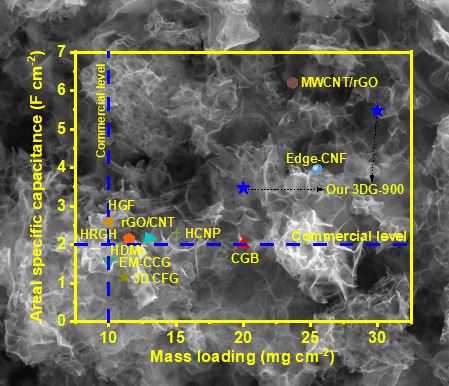The growth of renewable energy has accelerated in recent years, in part, due to the decreasing cost of renewable energy sources and the global drive to decarbonize the energy economy. A key technology for addressing the intermittent and distributed nature of renewables is the development of efficient and reliable energy storage systems that can reduce curtailment, match electricity demand with grid capacity, and improve grid performance and reliability. Supercapacitors have attracted attention for grid-scale applications due to their high-power density, reasonable energy densities, fast charge/discharge rates, low cost, and ultra-long cycle life. Graphene is one of the most promising supercapacitor electrode materials because of its large surface area, high electrical conductivity, good chemical stability, and excellent mechanical strength. Despite graphene being considered as an ideal supercapacitor electrode material, its use in commercial devices is limited because few methods exist to produce high-quality graphene at large scale and low-cost. We report a simple method to synthesize three-dimensional (3D) graphene by graphenization of coal tar pitch with a K
2CO
3 catalyst. This produces 3D graphenes with high specific surface areas up to 2,113 m
2/g and exceptional crystallinity (Raman I
D/I
G as low as ~ 0.15). The material has an outstanding specific capacitance of 182.6 F/g at a current density of 1.0 A/g. This occurs at mass loading of 30 mg/cm
2 which is three times higher than commercial requirements, yielding an ultra-high areal capacitance of 5.48 F/cm
2. The K
2CO
3 is recycled and reused over 10 cycles with material quality and electrocapacitive performance of 3D graphene retained and verified after each cycle. The synthesis method and resulting electrocapacitive performance properties create new opportunities for using 3D graphene more broadly in practical supercapacitor devices.

